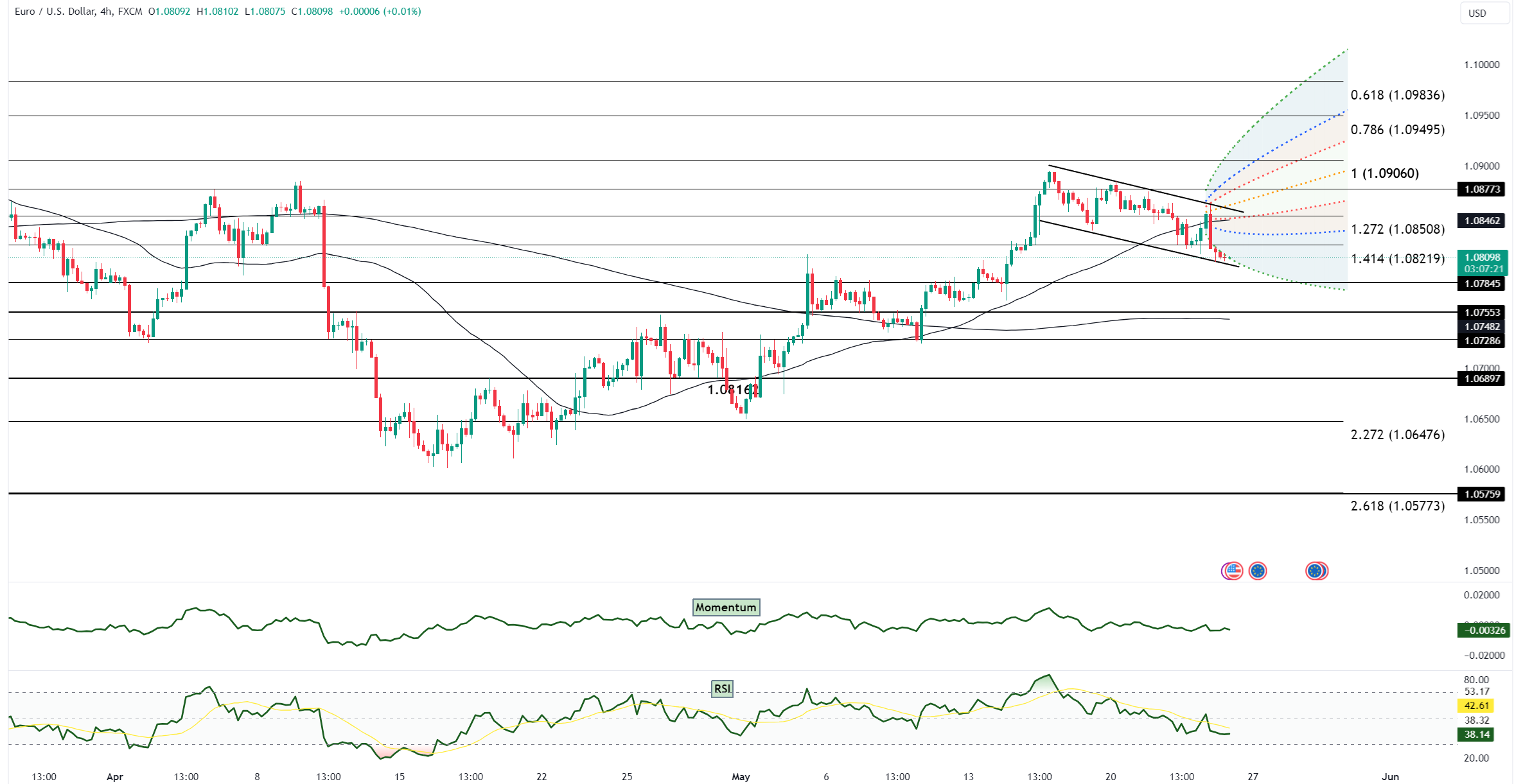EUR/USD Holds Steady as U.S. Economic Strength Offsets Eurozone Gains; Market Eyes Upcoming U.S. Data

On Thursday, the EUR/USD pair faced significant volatility, ultimately closing the day nearly unchanged. This was primarily driven by a clash of economic data from both sides of the Atlantic. Initially, the Euro showed strength due to optimistic economic signals from the Eurozone. The May PMIs for both the Eurozone and Germany came in strong, and first-quarter wage data indicated rising pay levels. These factors heightened fears of persistent inflation and led to speculation that the European Central Bank (ECB) might hold off on further rate cuts after the expected easing on June 6. However, the Euro's gains were short-lived as strong U.S. economic data overshadowed the Eurozone reports. Notably, robust U.S. weekly jobless claims and unexpectedly strong May S&P Global PMIs suggested that the U.S. business environment was improving, casting doubts on imminent Federal Reserve rate cuts. Some Fed officials even expressed readiness to increase rates if inflation remained below the 2% target, contributing to the widening of the German-U.S. two-year yield spread and pushing EUR/USD down towards the critical support zone between 1.0790 and 1.0815.
Looking ahead, market attention is shifting to upcoming U.S. economic data, including the second estimate of Q1 GDP, weekly jobless claims, and April PCE figures. Strong indications of ongoing economic growth and inflation pressures in the U.S. could further pressure EUR/USD downward. The pair is currently off by 0.07%, influenced by a soft risk appetite in Asia where stocks have slid. Bundesbank President Nagel's upcoming speech is expected to be cautious on rate cuts after June, which could further impact the Euro's performance. Additionally, U.S. durable goods orders and consumer sentiment data pose key event risks for EUR/USD. From a technical perspective, the charts indicate negative momentum studies with the 10- and 21-day moving averages climbing. While the 21-day Bollinger bands are rising, suggesting an uptrend that has stalled, the overall signals remain net positive. A close below the 1.0785 21-DMA would shift the bias lower for the coming week, with initial support and resistance levels at the 1.0785 21-DMA and the 1.0861 New York high, respectively. The 1.0820/30 levels with 2.292 billion in options expiring on May 24th also present critical close strikes to watch.

